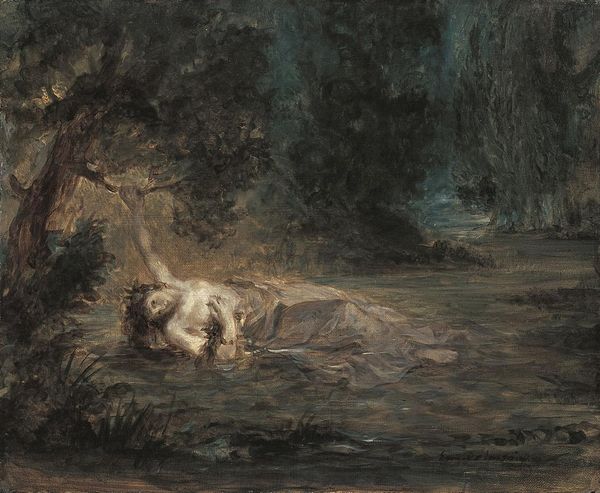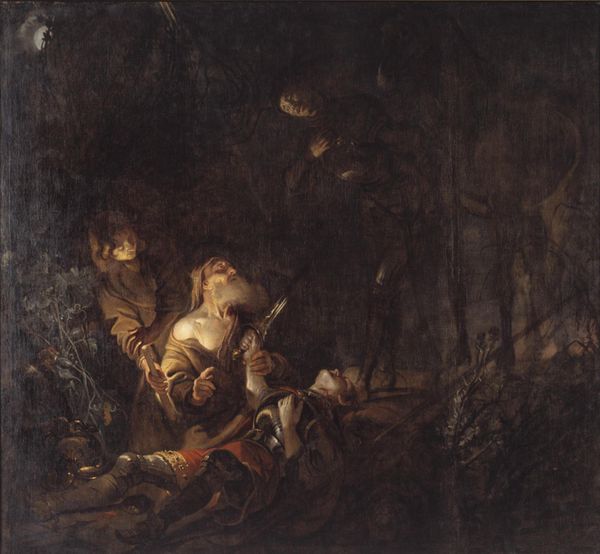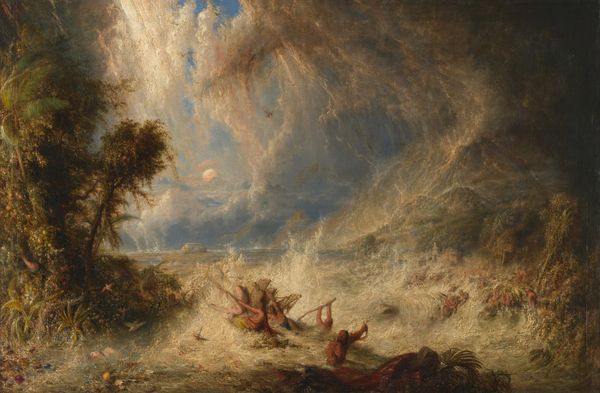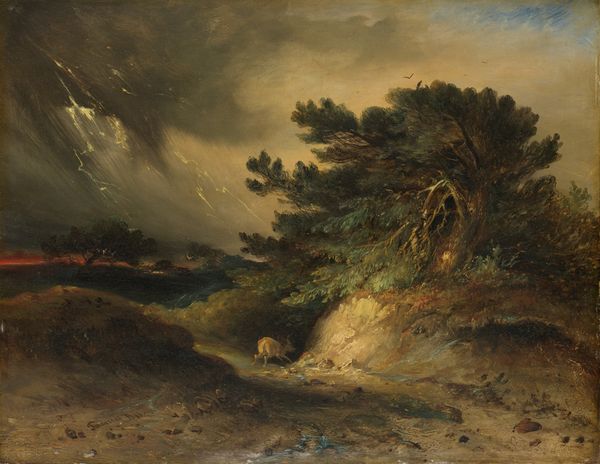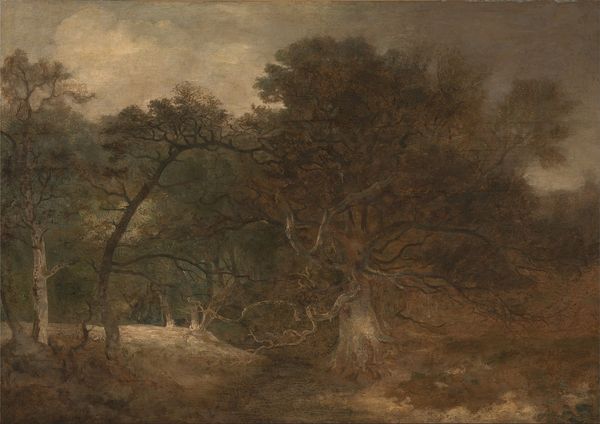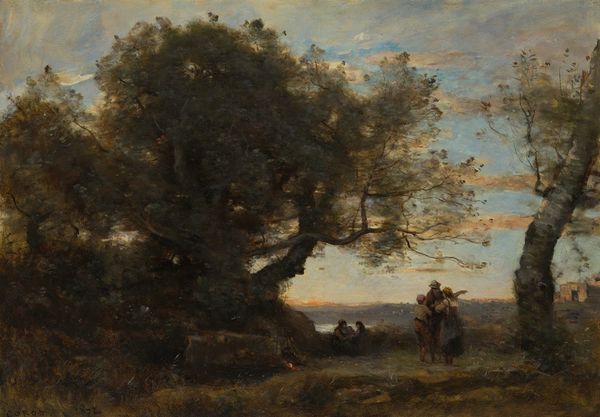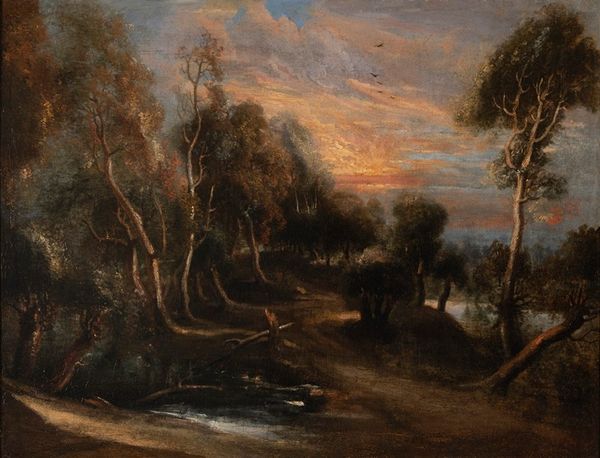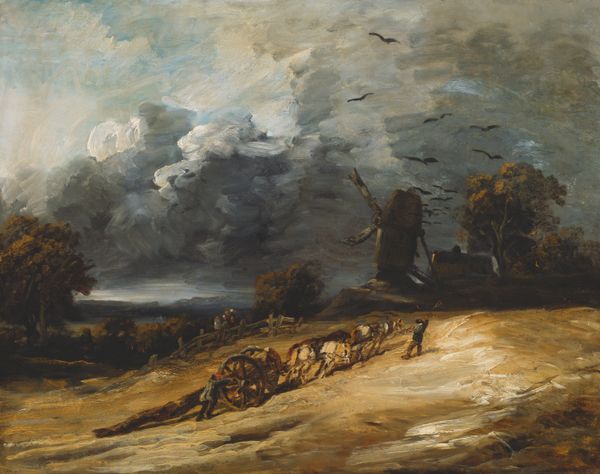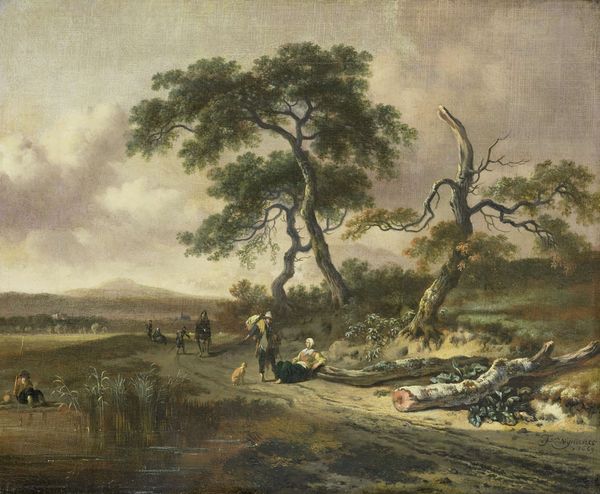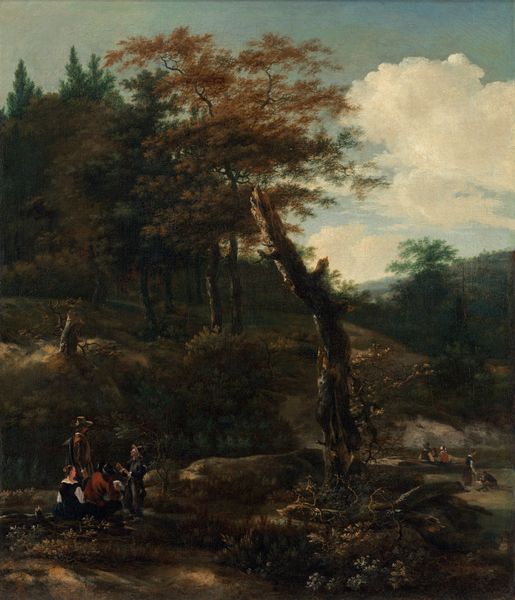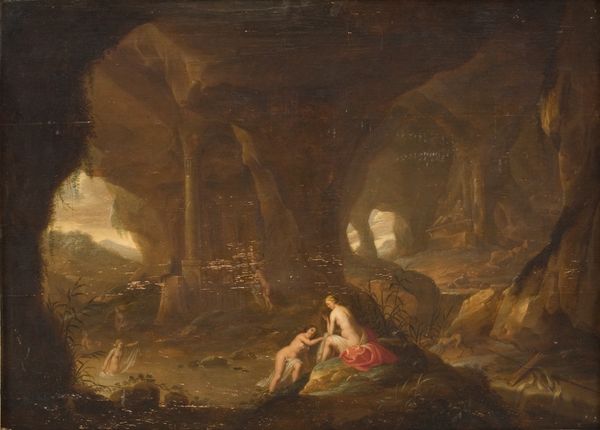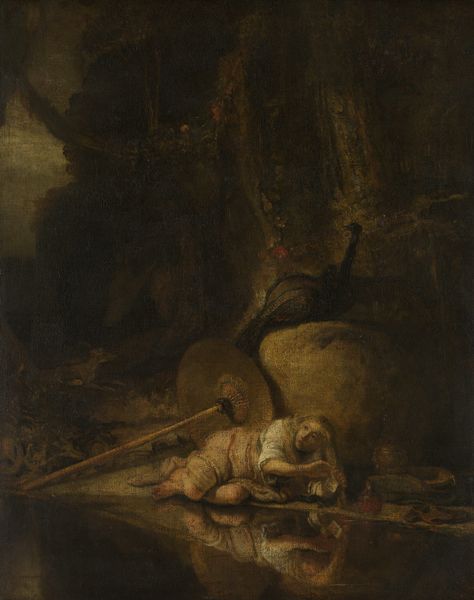
painting, oil-paint
#
fantasy art
#
painting
#
oil-paint
#
landscape
#
fantasy-art
#
charcoal drawing
#
environmental-art
#
underpainting
#
romanticism
#
hudson-river-school
#
history-painting
#
sublime
#
realism
Copyright: Public Domain: Artvee
Curator: Oh, what a dramatic scene! I feel swallowed by this tumultuous landscape. It's as though nature itself is rebelling. Editor: Indeed! What strikes me is the depiction of raw power—pure, untamed wilderness. We are looking at "Tornado in an American Forest," an oil painting completed in 1831 by Thomas Cole, founder of the Hudson River School. Curator: Knowing Cole's connection to the Hudson River School makes me think about the socio-political context in which he painted. This was a period of westward expansion, yet there's also a tension present; an underlying comment about the destructive impact of industrialization and human ambition. Is this sublime chaos a critique? Editor: Possibly. Consider the philosophical underpinnings of Romanticism; Cole may well have used the power of the storm as a visual metaphor. The period looked to nature for solace, and warnings. What do you make of the almost defiant presence of a small, cloaked figure seemingly sheltering by the trunk? Curator: Good eye! The lone individual almost disappears, dwarfed by the devastation. Cole underscores humankind’s vulnerability and impotence when facing nature's wrath. It provokes questions about agency, and control within increasingly complex power structures. This becomes especially potent when examining the dynamics of westward expansion and its disregard for Indigenous sovereignty. Editor: Precisely. Think, too, about the developing nation's insatiable hunger for resources. In contrast to European landscape painting, these early American artists presented both a celebratory vision alongside stark moral lessons for a young republic shaping its own identity. I am also thinking about how institutions display such work, often omitting context for this art, which can lead to misunderstandings of how relevant the issues within them truly are. Curator: Agreed. These aren’t passive landscapes. They call us to engage actively and thoughtfully with a more inclusive historical reading and an urgent dialogue concerning climate responsibility. Editor: A landscape imbued with history, then. One which whispers still.
Comments
No comments
Be the first to comment and join the conversation on the ultimate creative platform.

